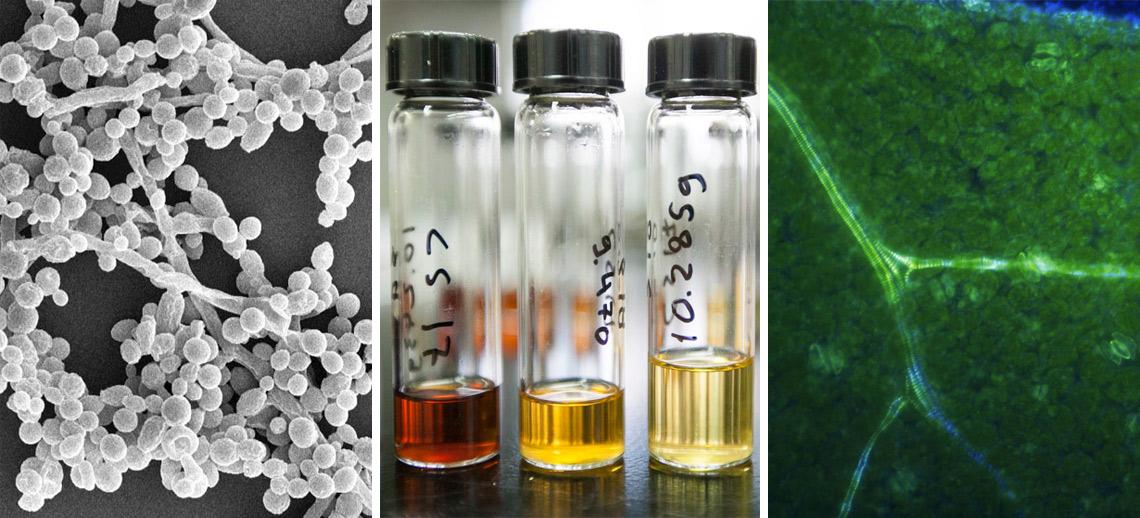
MADISON, Wis. – The Great Lakes Bioenergy Research Center (GLBRC), one of three bioenergy research centers established in 2007 by the U.S. Department of Energy (DOE), recently celebrated the filing of its 100th patent application.
Led by the University of Wisconsin–Madison and major partner Michigan State University, GLBRC consists of more than 400 scientists, students and staff organized around a central mission: to develop a robust and sustainable pipeline for producing biofuels and chemicals from the non-edible, or cellulosic, portion of plants.
Since 2011, GLBRC has reported inventions at a rate that exceeds expectations for a university entity of its size and funding level by 50 percent. Reflective of GLBRC’s cross-disciplinary research mission, the discoveries are highly collaborative in nature and cut across diverse areas of research.
“Collaboration is the center’s lifeblood,” GLBRC director Tim Donohue says. “Across different research areas—sustainability, plants, deconstruction and conversion—GLBRC scientists are working with and learning from each other every single day.”
“Our relationship with industry, government and other research institutions helps us produce knowledge that meets real-world needs,” Donohue adds. “By spurring the development of cellulosic biorefineries that will produce the fuels and chemicals we need and use, we are driving the economy and addressing a critical societal need.”
In recently developed GLBRC technology, UW–Madison’s John Ralph, Michigan State University’s Curtis Wilkerson and University of British Columbia’s Shawn Mansfield pooled their diverse expertise to engineer poplar trees whose modified plant walls make them easier to degrade for conversion to fuel. The resulting technology, reported in Science last April, is of broad interest to the bioenergy, bioproducts and fiber industries.
“I guarantee that John Ralph and I would never have crossed paths without GLBRC,” Wilkerson said of the partnership.
GLBRC technology has also laid the foundation for several startup companies. Hyrax Energy, a private company begun by UW–Madison researcher Ronald Raines, was the first company to emerge from GLBRC. Its technology converts biomass into fermentable sugars usable in biochemicals, bioproducts and drop-in fuels.
GlucanBio, which draws from technologies developed by GLBRC’s Jim Dumesic, focuses on de-risking and scaling up the use of a plant-derived solvent capable of dramatically reducing the cost of producing biofuels and bioproducts.
“What we’re seeing,” Donohue says, “is that collaborative partnerships like GLBRC’s greatly increase the potential for transformative research and technology transfer.”
Several technology transfer organizations, including the Wisconsin Alumni Research Foundation, Michigan State University Technologies and Texas A&M’s Office of Technology Commercialization, support the center’s intellectual property efforts and enable the licensing of its technologies.
“This is an exciting milestone for GLBRC,” says Leigh Cagan, chief technology commercialization officer for WARF. “We’re proud to support the UW–Madison researchers and partners working to meet the greatest energy challenge of our time.”
For more information on GLBRC technologies, contact licensing@warf.org.